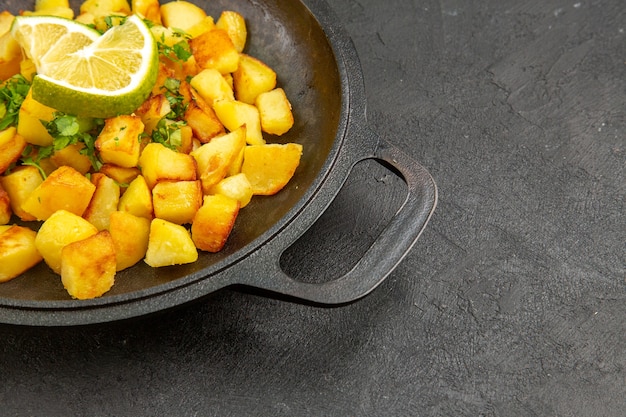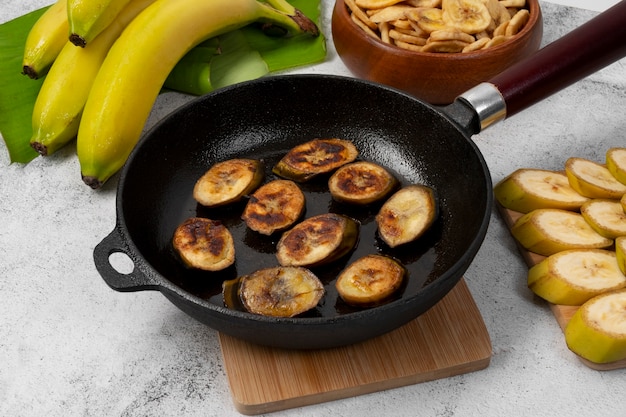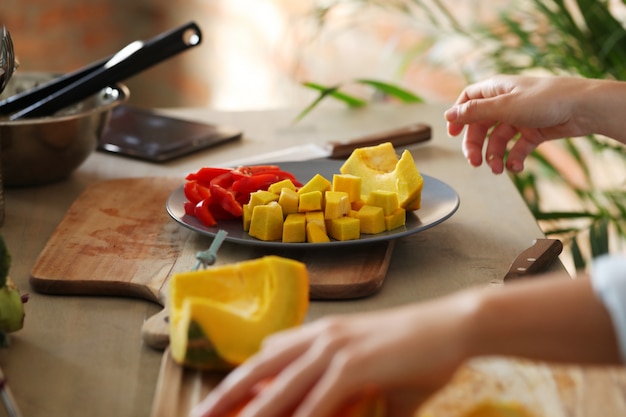Ah, corn on the cob. The mere mention of it conjures up images of sunny summer days, smoky barbecues, and the sweet, juicy flavour of freshly picked corn. It's a classic side dish that's simple to prepare, yet surprisingly versatile. But let's be honest, there's a fine line between perfectly cooked corn and something that's a bit, well, lacklustre.
Over the years, I've experimented with countless methods – boiling, steaming, even grilling – all in pursuit of that perfect bite. There's something about stovetop cooking that just feels right, though. It's hands-on, you can really control the process, and you get a sense of accomplishment (and maybe even a bit of steamy nostalgia) when you're done.
So, today I'm sharing my personal approach to cooking corn on the stovetop, incorporating all the tips and tricks I've learned along the way. It's not rocket science, really, but with a little care and attention, you can achieve culinary perfection in a matter of minutes.
Part 1: Setting the Stage for Sweet Success

Choosing the Right Corn: The Foundation of Flavor
This is where it all begins. Forget those sad, pale ears of corn lurking in the supermarket. We're talking about fresh, vibrant corn, bursting with juicy sweetness. Look for ears with bright green husks, silky tassels (those wispy strands at the top), and kernels that are plump and firm.
Here's a little trick I've learned: Gently pull back a bit of the husk. If the kernels are still moist and glistening, you're in for a treat. If they feel dry or wrinkled, you might want to look elsewhere.
If you're not sure what to look for, don't hesitate to ask your local greengrocer. They'll be able to point you towards the freshest, most flavourful corn available.
Preparing Your Corn: The Essentials for a Clean and Delicious Feast
Once you have your corn, it's time for a little prep work. Start by removing the husks and silks. You can do this by hand, gently peeling back the husk and pulling off the silky threads. Alternatively, use a sharp knife to trim them away if you prefer.
As you're cleaning the corn, keep an eye out for any critters that might be making themselves at home. No one wants unwanted surprises when it's time to eat!
Washing your corn thoroughly is always a good idea. Some people even leave the husks on, but ensure they're clean before cooking. They'll act as a natural steamer, keeping the corn moist and tender.
Part 2: Bringing the Heat: The Art of Boiling and Steaming

Boiling: The Classic Approach
This is the tried-and-true method, familiar to generations of cooks. Fill a large pot with enough water to completely cover the corn. Bring it to a rolling boil, ensuring the water is actively bubbling.
Here's a tip I've learned over the years: Adding a teaspoon of salt to the boiling water is a simple but effective way to enhance the corn's flavour.
Gently place the corn cobs into the boiling water, making sure they're fully submerged. The water should be boiling again within a minute or two.
Steaming: A Subtler Approach
If you prefer a more delicate touch, steaming is a great alternative. Place a steamer basket in a large pot and add water to the bottom, making sure the water level doesn't touch the basket. Bring the water to a boil.
Once the water is boiling, add the corn cobs to the steamer basket and cover the pot with a lid. You can even add a tablespoon of butter to the steaming water. It'll infuse the corn with a rich, buttery flavour that's simply irresistible.
Part 3: Mastering the Timing: Achieving Perfect Doneness

Boiling Time: A Balancing Act
The cooking time for corn will vary depending on the size of the cobs and your preferred level of doneness. For boiling, I usually aim for 5-7 minutes. However, it's always best to check for doneness.
Use a sharp knife to pierce a kernel near the base of the cob. If the kernel is tender and slightly soft, it's ready. If it's still firm, give it a few more minutes.
Steaming Time: A Gentle Approach
Steaming takes a similar amount of time as boiling. I usually steam corn for 5-7 minutes, but again, it's important to check for doneness.
Part 4: Finishing Touches: Elevate Your Corn to New Heights
Adding Flavour: A Symphony of Taste
Once your corn is cooked, you can add some finishing touches to enhance its natural sweetness. My favourite combination is a pat of butter, a pinch of salt, and a sprinkle of freshly ground black pepper. It's simple but oh-so-satisfying.
You can also experiment with other flavourings, depending on your mood. A touch of garlic, a sprinkle of paprika, or a dash of chilli flakes can add a bit of zing.
Serving the Corn: A Feast for the Senses
Serve your perfectly cooked corn hot, either on its own or as part of a larger meal. It's a delicious accompaniment to grilled meats, fresh salads, or even a simple bowl of soup.
Storing Leftover Corn: Keeping the Flavour Fresh
If you have leftover corn, you can store it in the fridge for up to 3 days. Wrap the corn cobs in plastic wrap and store them in the refrigerator. They'll still be delicious when you're ready to enjoy them again.
Part 5: Navigating the Unexpected: Troubleshooting Common Problems
Overcooked Corn: A Case of Too Much Heat
Overcooked corn can be tough and dry, a far cry from the tender, sweet corn we're aiming for. If your corn is overcooked, don't despair! There are ways to salvage it.
You can try adding a bit of butter or oil to the pan and cooking it for a few more minutes. This might help to rehydrate the kernels and give them a little more flavour. Alternatively, you can add the overcooked corn to a soup or stew, where it will soften and add a subtle sweetness to the dish.
Undercooked Corn: A Tale of Undone Potential
Undercooked corn will be hard and chewy, not the enjoyable experience we're after. If your corn is undercooked, simply add it back to the pot and cook it for a few more minutes, until it reaches your desired level of tenderness.
Part 6: Exploring the Possibilities: Variations on a Theme
grilled corn: A Smoky Delight
If you're feeling adventurous, grilling corn on the cob can add a smoky, charred flavour that's irresistible. Remove the husks and silks, then grill the corn cobs over medium heat for 10-15 minutes, turning occasionally until they're slightly charred and the kernels are tender.
roasted corn: A Warm and Cozy Treat
Roasted corn on the cob is a comforting option, especially during cooler months. Preheat your oven to 400°F (200°C). Brush the corn cobs with olive oil and season them with salt, pepper, and any other spices you fancy. Roast for 20-25 minutes, turning occasionally, until the kernels are tender and slightly browned.
Part 7: Unlocking the Secrets: The Key to Perfectly Cooked Corn
I've learned a few key secrets over the years that have helped me achieve consistent success when cooking corn on the cob.
The Secret to Tenderness: Don't Overcook
It sounds obvious, but it's amazing how many people overcook their corn. The result is tough, dry, and frankly, not very enjoyable. Pay close attention to the cooking time. Keep an eye on the corn, and check for doneness regularly. You want the kernels to be tender but still have a bit of a bite.
The Secret to Flavor: The Power of Butter
Add a tablespoon of butter to the cooking water or steaming water. This simple step will infuse the corn with a rich, buttery flavour that's truly delightful.
Part 8: Tips and Tricks: Elevating Your Corn Game
Here are a few more tips and tricks to help you master the art of cooking corn on the cob:
- Use fresh, in-season corn for the best flavour and juiciness.
- Don't overcook the corn. It's better to err on the side of undercooked than overcooked.
- Check the corn for doneness by piercing the kernel with a sharp knife. It should be tender but still have a slight bite.
- Add a pat of butter and a sprinkle of salt and pepper to the corn for extra flavour.
- Serve the corn hot for the best results.
Part 9: FAQs: Addressing Your Corn Conundrums
What if my corn is too dry?
If your corn is too dry, you can try to salvage it by adding a bit of butter or oil to the pan and cooking it for a few more minutes. You can also add it to a soup or stew to use it up.
How do I know if my corn is cooked?
The best way to tell if your corn is cooked is to pierce the kernel with a sharp knife. The kernel should be tender and slightly soft.
Can I freeze corn on the cob?
Yes, you can freeze corn on the cob. Simply blanch the corn in boiling water for 3-5 minutes, then cool it in an ice bath. Remove the husks and silks, then wrap the corn cobs in plastic wrap and freeze them.
What can I do with leftover corn?
Leftover corn can be used in a variety of dishes, such as soups, stews, salads, and casseroles. It's also delicious added to omelets or frittatas.
Is there a way to make corn more flavorful?
Yes! You can add a tablespoon of butter to the cooking water or steaming water. This will help to infuse the corn with a rich, buttery flavour. You can also experiment with different herbs and spices, such as garlic, paprika, or chilli flakes.
Part 10: Conclusion: A Celebration of Summer's Sweetness
There you have it, my guide to perfectly cooked corn on the cob. It's really not that complicated, is it? Just a few simple steps and a little bit of attention to detail, and you'll be enjoying delicious, sweet corn on the cob in no time.
I encourage you to experiment with different methods and find what works best for you. Whether you prefer boiling, steaming, grilling, or roasting, there's a perfect way to cook corn on the cob for everyone. So, next time you're looking for a simple and delicious side dish, give corn on the cob a try. You won't regret it!
Everyone is watching

How to Cook Frozen Lobster Tails Perfectly: A Step-by-Step Guide
RecipesLobster. Just the word conjures up images of lavish meals, special occasions, and a taste of luxury. But let's...

Pork Fillet Cooking Time: How Long to Cook It Perfectly
RecipesPork fillet, or tenderloin as it's sometimes called, is a real favourite in our house. It's so versatile, and...

Pigs in a Blanket Cooking Time: How Long to Bake for Perfect Results
RecipesAh, pigs in a blanket. Just the name conjures up images of those delightful little parcels of crispy pastry en...

The Ultimate Guide to Cooking Delicious Frankfurters
RecipesLet's face it, we all love a good frankfurter. It's a classic, simple, and always satisfying. But let's be rea...

Wolf Meat Recipes: A Guide to Cooking Wild Game
RecipesLet's be honest, you don't see wolf meat at your local butcher shop every day. It's a bit of a wild card, but ...
